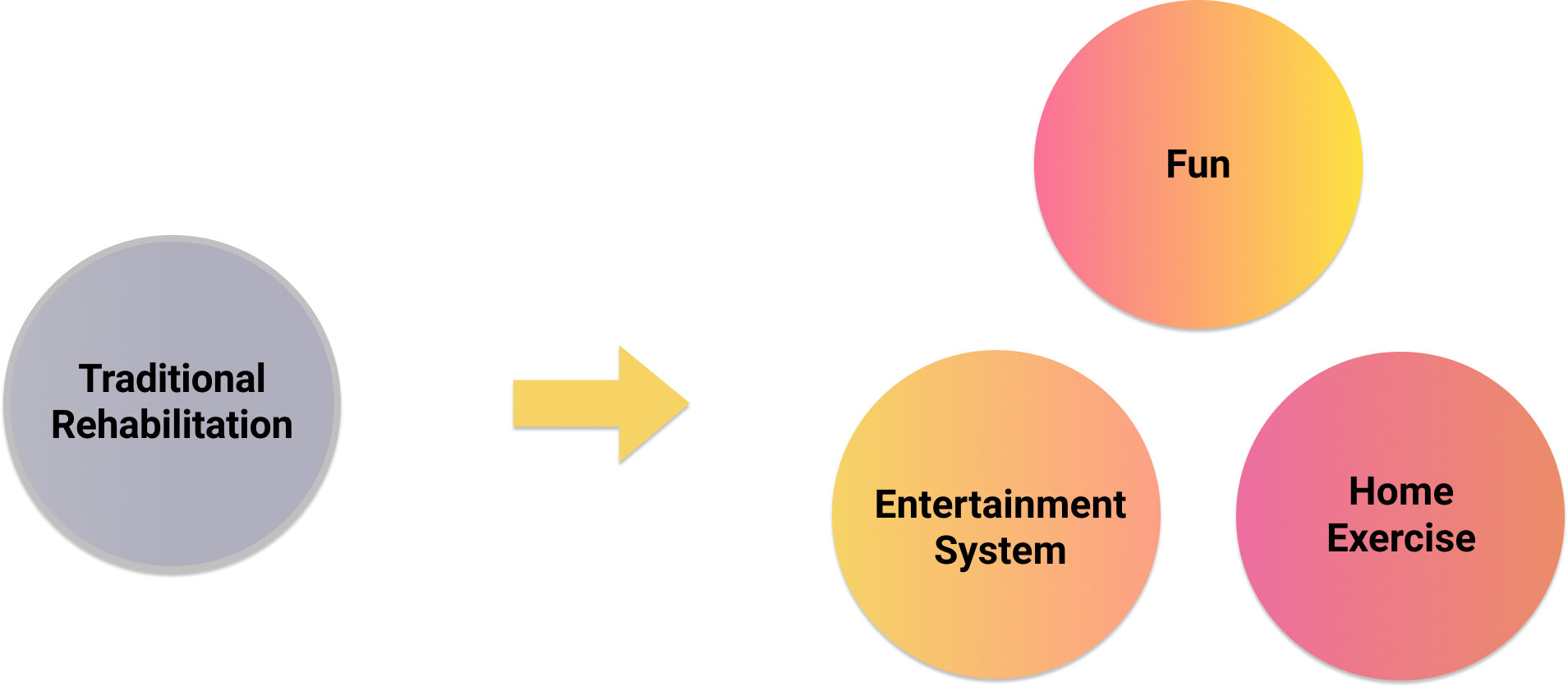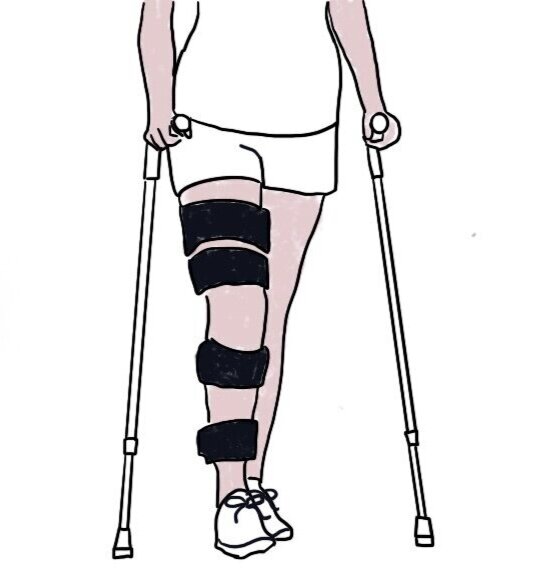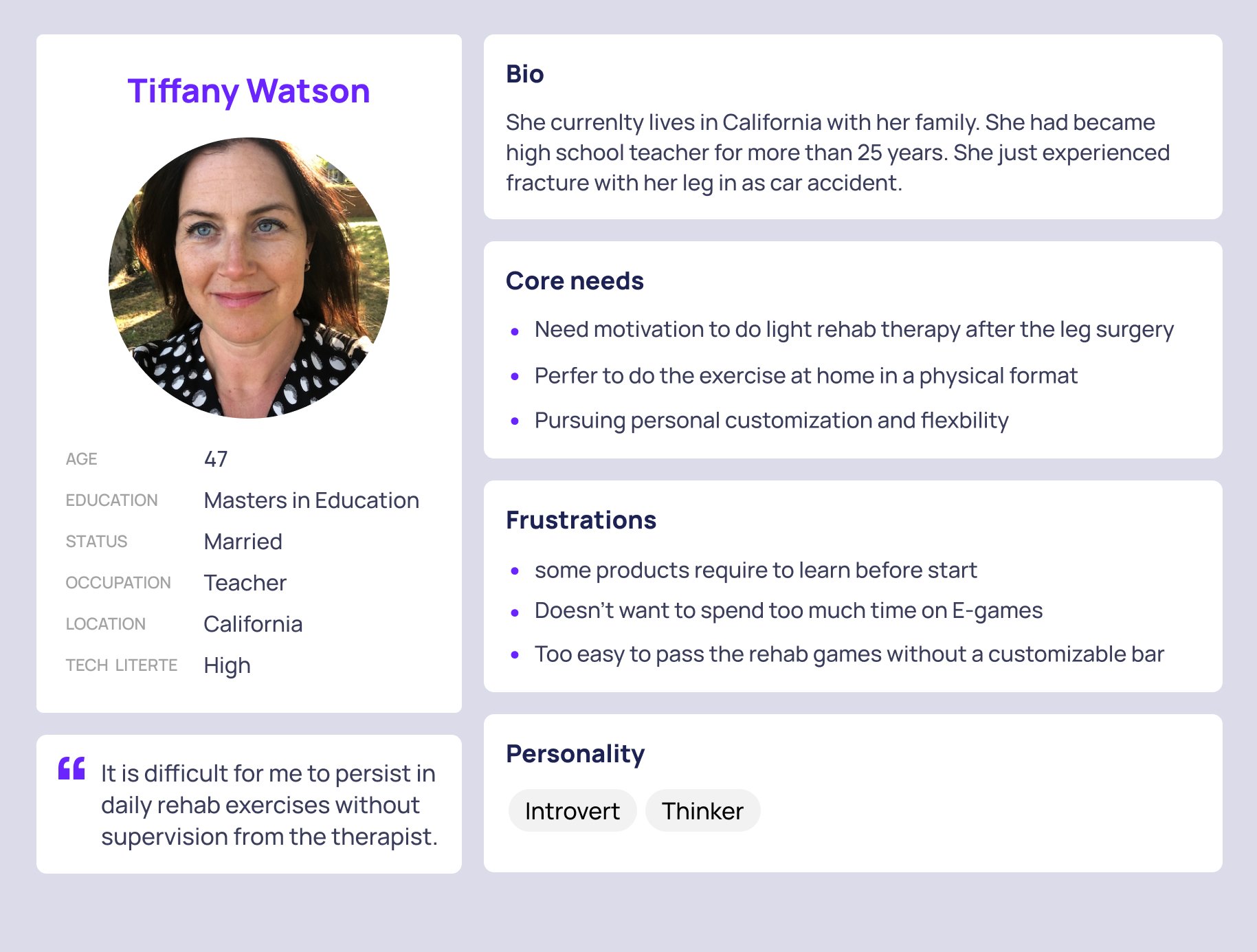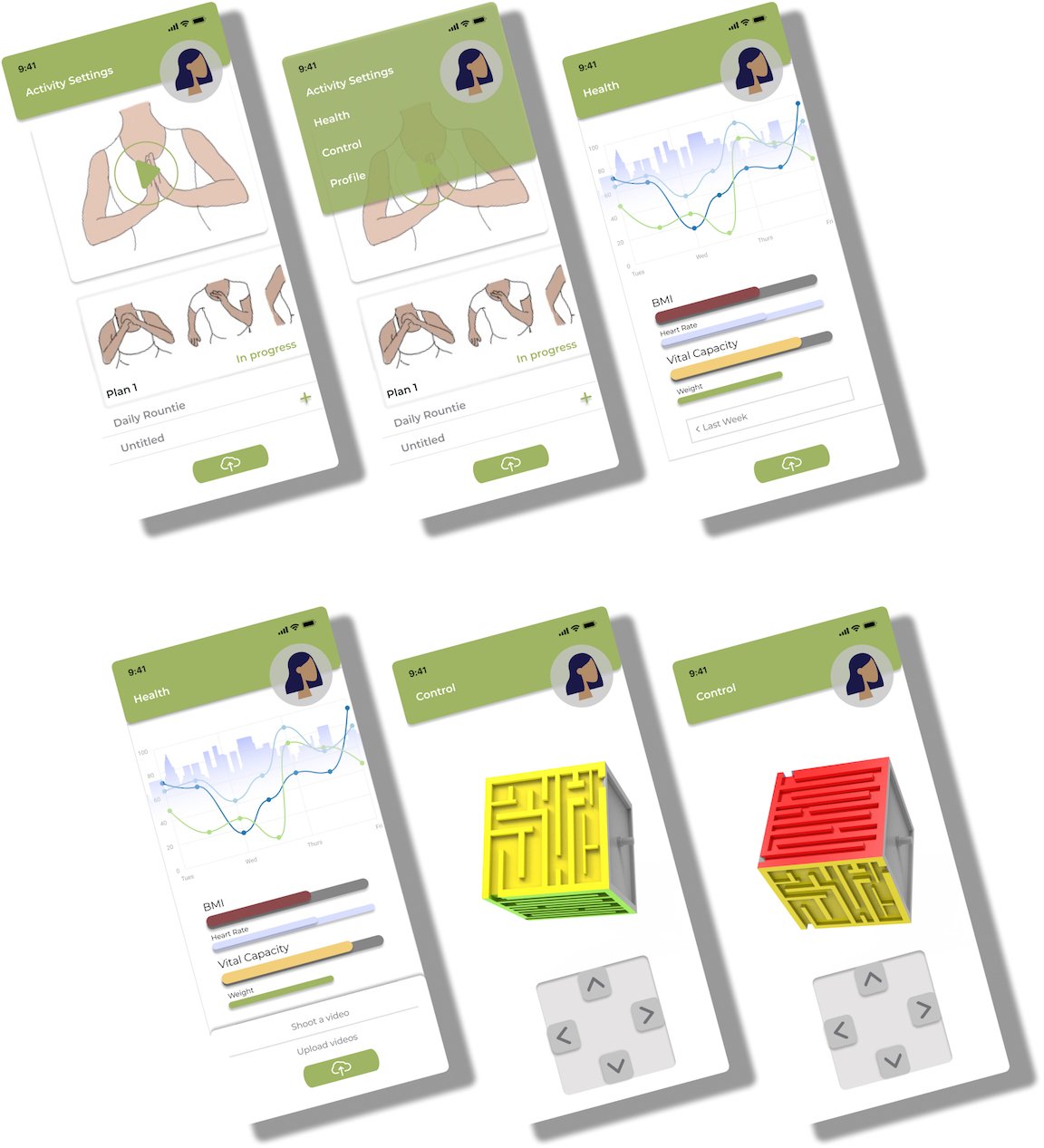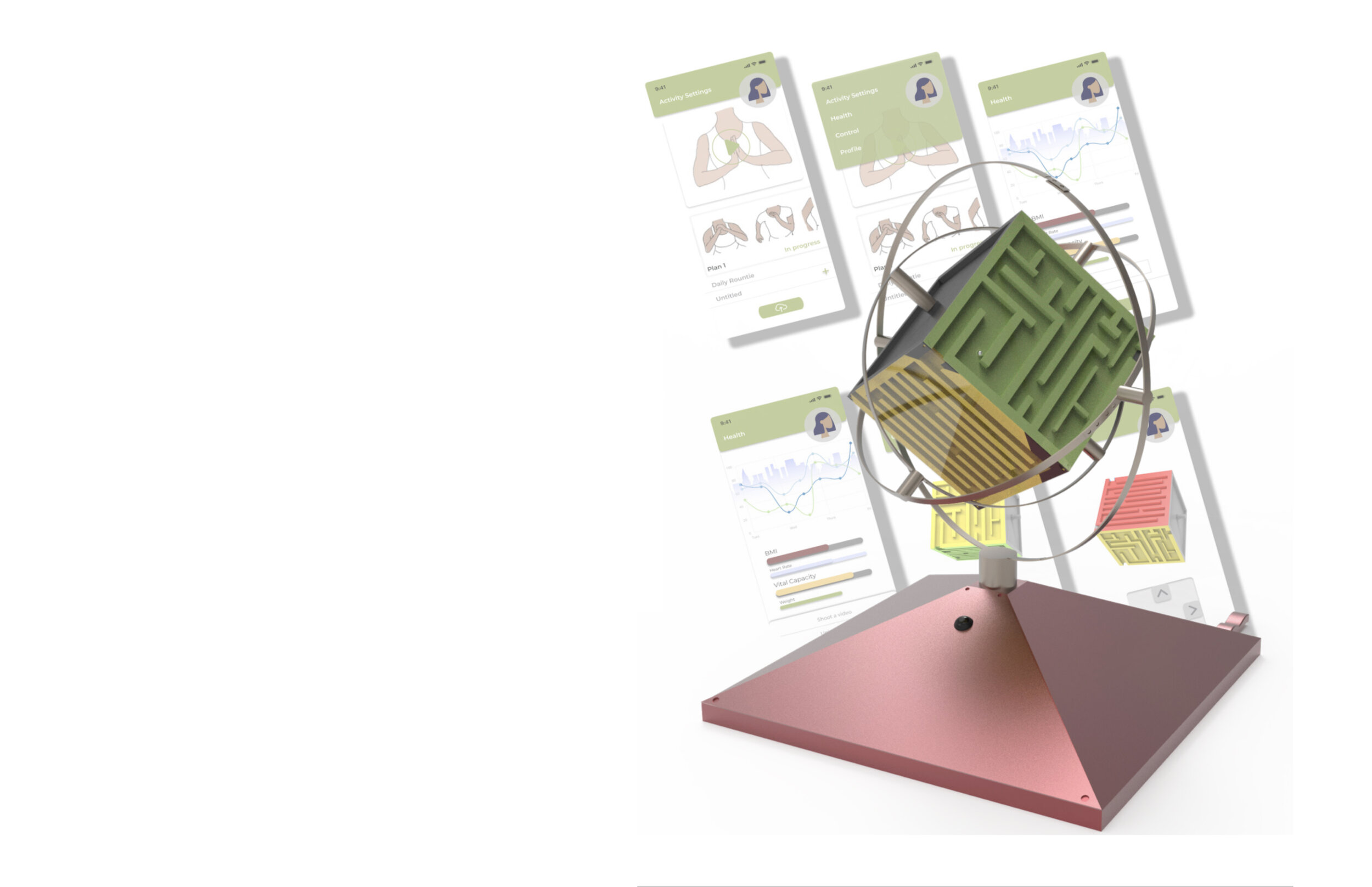
Machine Learning Rehabilitation Arcade
Group Project, 2020
Tools: Figma, Adobe Illustrator, SolidWorks, Keyshot
Role: Research, Brainstorming, Sketching, Product Design and UX Design
Maze X
Machine Learning Rehabilitation Arcade
Patients used to practice repetitive exercises in the rehab center.
By introducing game features into rehabilitation, the goal is to make the process more fun and accessible at home.
Product Overview
This designing project focuses on using physical intelligent machines, the guiding principle of embodied agent and kinetic expression. We intend to build an entertainment system that is enabled by low-intensity rehabilitation exercises back home that one person or multiple players can operate.
Design statement & problems
Our goal of designing this set of systems is hopefully to help people, who have their physical condition not suitable for regular gym-intensity exercise, have to do daily recovery therapy at home without supervision, and no longer convenient to exercise outdoors, to discover more fun in doing such repetitive activities or therapies at home.
Two Steps to begin your Rehabilitation at home
More functions on App
The related app will monitor users’ basic body information, track their exercise behavior, and motivate them to exercise daily. Also, the user can check a more detailed view of the maze by swapping the interface. The maze allows users to DLY personal exercise plan with the help of the therapist. They have preset 4 plans in the app with 8 exercise gestures for each.
Researches and Design Process
Why rehabilitation?
Rehabilitation is care that can help you get back, keep, or improve abilities that you need for daily life. These abilities may be physical, mental, and/or cognitive (thinking and learning). You may have lost them because of a disease or injury, or as a side effect from a medical treatment. Rehabilitation can improve your daily life and functioning.
Resources: https://medlineplus.gov/rehabilitation.html
User Persona
Who needs MazeX?
Injuries and trauma, including burns, fractures (broken bones), traumatic brain injury, and spinal cord injuries
Side effects from medical treatments, such as from cancer treatments
Certain birth defects and genetic disorders
Chronic pain, including back and neck pain
Developmental disabilities
Stroke
Severe infections
Major surgery
What kind of Home Exercise?
Axial Extension, Shoulder Blade Squeeze, Dowel Exercise, Modified Knee Bends, Shoulder Horizontal Abduction, Step Ups, etc.
Dowel Exercise:
It strengthens your arm muscles and requires you to use your abdominal muscles and diaphragm for breathing. This exercise will decrease your feeling of breathlessness by strengthening your breathing muscles.
Axial Extension:
It lengthens your spine, which improves posture, and increases comfort, mobility, and range of motion. This posture changes our patterns of movement and our breathing efficiency.
Brainstorming & Ideation
I brainstormed several ideas during the design process, such as dance pads, pinballs, whole body instruments. We compared and made the sequence of advantages and disadvantages. Some are quick to learn, and some may take time; some are more portable, while others are heavy and inconvenient. The final design decision is a three-dimensional cube maze as a physical game because it is easier to begin with different age groups, and can set different challenge bars later.
Evaluation & Comparison
Competitive Analysis
One challenge we face is that multiple online rehabilitation games are very convenient in the market. Patients can do their therapy at any time, anywhere. We learned from the products and made our product more customized: the faces of the maze can be manually changed, and the gestures can be self-assigned in the app. We want to make rehabilitation more home-based and easy to learn. We also researched the kinds of exercise used in rehabilitation therapy. Because it is home-based, we designed light exercises, such as axial extension, shoulder blade squeeze, dowel exercise, modified knee bends, shoulder horizontal abduction, steps ups, etc.
Prototypes
How does MazeX work?
By presetting rehabilitation gestures and movements in-app, MazeX will learn and connect poses with mechanisms. When users start exercises, the camera will capture their poses and command the rotation of the MazeX body.
By working on different exercise poses, MazeX will rotate in different corresponding directions. Our final goal is by rotating MazeX, getting the pinball out of the Maze!
Users can use different exercise movements to control the rotation of the maze to move the ball.
More Details






Reflections
We designed a rehabilitation machine during the design processes and explored the relationship between humankind and machines. Getting rid of interfaces, can we finish our rehabilitation more naturally? By Involving traditional games in high technology, we are creating an interaction between machines and humans. For further development, I would conduct more usability tests to make the product more user-comfortable.

